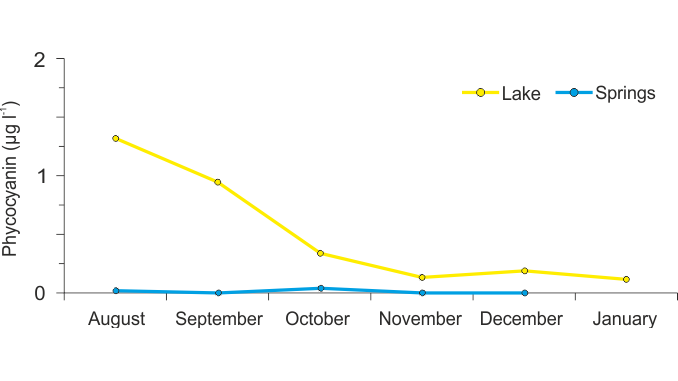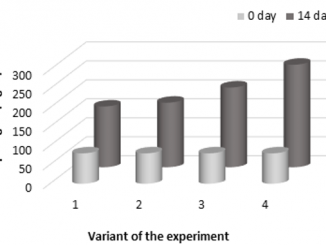
Paper category: Original research paper
Corresponding author: Hera Karayanni (hkaray@cc.uoi.gr)
DOI: 10.1515/ohs-2018-0013
Received: September 26, 2017
Accepted: December 8, 2017
Full text: here
Citation (APA style):
Abstract
Monthly variations of size-fractionated chlorophyll a and phycocyanin were studied in Lake Pamvotis between August 2016 and January 2017. Sampling was conducted at two sampling sites: in the main lake (Site 1: Lake) and in an adjacent man-made water ski lake with karstic springs (Site 2: Springs). Samples were fractionated into three size classes: 0.2–2 μm (pico), 2–20 μm (nano) and 20–180 μm (micro). According to chlorophyll a values, eutrophic to hypereutrophic conditions prevail at Site 1 and oligotrophic to mesotrophic conditions – at Site 2. Similarly, Site 1 was distinguished by higher concentration of phycocyanin compared to Site 2. Fractionated chlorophyll a showed monthly variations at Site 1 with alternations in the dominance between the two larger fractions. The maximum of the 0.2–2 μm fraction was observed in October but it contributed less to the total chlorophyll a content than nano- or microphytoplankton. Its contribution was higher at Site 2, reaching occasionally ~ 40% of the bulk chlorophyll a. However, nanophytoplankton was the fraction found to respond faster when disturbances occurred. At Site 1, phycocyanin correlated well with total chlorophyll a as well as with the micro- and nanophytoplankton fractions, indicating that cyanobacteria represent an important component of the large-sized phytoplankton in Lake Pamvotis.


Bądź pierwszy, który skomentuje ten wpis